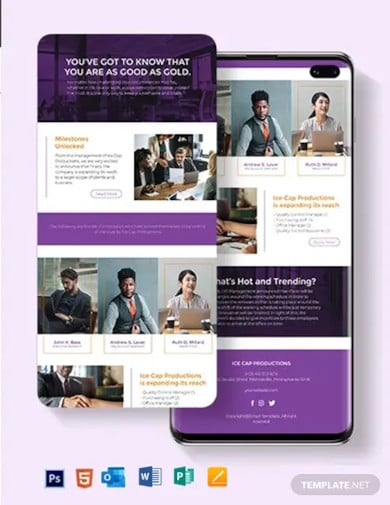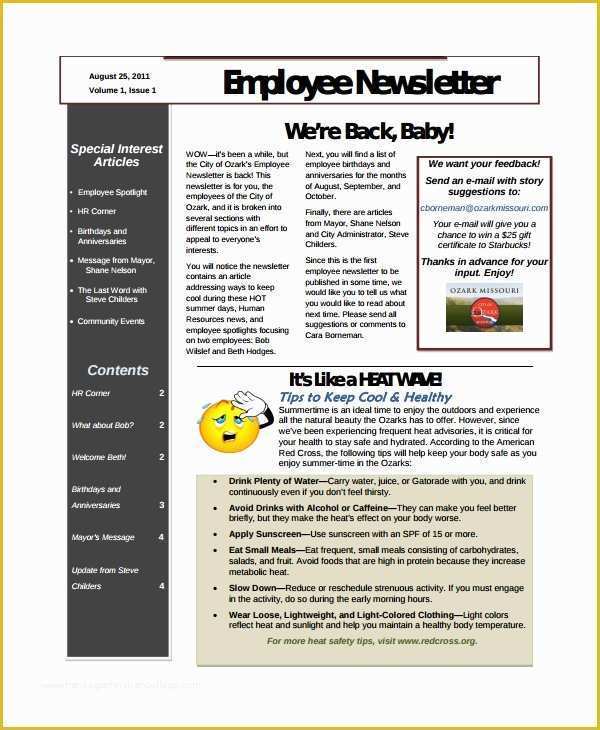
Once again, you should get rid of report-like feeling in your newsletter and aim for easily consumable content your employees will love to receive. Therefore, photos definitely belong to your employee newsletter. Moreover, human brain processes images 60 000 times faster than text. Namely, 90% of the information that the brain processes are visual. Avoiding photosĪnother common employee newsletter mistake is avoiding photos or any kind of visual items. It is a more relatable and natural way to consume information, which is your ultimate goal. In line with that, employees will more likely open and read employee newsletter if you present information in a storytelling manner. However, many companies are dropping formalities and are adopting more natural ways of communica tion to facilitate more open company cultures. Of course, the formality of your entire employee communication depends on the type of company and industry you work for. Sure, you want to report some important updates but reports are neither interesting nor easy to consume.

Being overly formalĮmployee newsletter should not be or look like a report. This is especially true for Millennials and Gen Z who are surrounded by captivating online content more than other generations. Compared to the usually consumed content on social media or news portals, it can seem quite boring and mundane. One of the main shortcomings of employee ne wsletter is that it fail s to catch employees’ attention. In fact, 34% of employees say that their internal comm unication s do not work because important information gets buried by too much other information.įailing to catch your employees’ attentio nĪs explained earlier, human attention span is short. Moreover, eve n if you do not send employee newsletter too frequently, you might be including too much information in it. However, by sending employee newsletter too frequently, you are just contributing to the abundance of content your employees are bombarded with on daily basis. I t is good that you want to keep transparency in your company and your employees updated timely. It is as simple as that – if your employee newsletter is too long, there is less chance of your employees reading it. In 2000, average attention span was 12 seconds in 2015, it was 8.25 seconds. This is of no wonder, since research shows that the human attention span is rapidly decreasing. TL DR! The popular abbreviation meaning “Too long, didn’t read” became somewhat of a funny catchphrase among younger generations. These are some of the most common mistakes made when it comes to employee newsletter.

However, in trying to do our best, sometimes we all make mistakes. This is why internal comms experts must ensure that the employee newsletter gets opened, read and consumed by employees. Their attention is often not where it should be, and they are unable to tell important from less important information apart.

Of course, employees are frustrated and stressed out by this. Today, we receive more information on daily basis than we ever did before. 5 Most Common Employee Newsletter Mistakes However, the main goal of employee newsletter is to keep employees informed on important company updates and engaged in the ir work. Its content can range across variety of topics.
Best employee newsletters update#
Before we start, get down to the basics and find out the 5 reasons employee communication is essential for company success.įirst things first: what is employee newsletter at all? Simply put, employee newsletter is a company-wide update that is sent to all employees. ☎️ Read on to find out what are most common mistakes, best practices and ideas around creating and sending employee newsletters. This is exactly why employee communication experts now must use the best employee newsletter practices at their disposal to catch employees’ attention and ensure they are safe, informed and engaged. Nowaday s, many employees are frustrated by getting too many emai ls, and important stuff often get lost in t he shuffle. As one of the most used employee communication methods, email ensure s everybody is informed and engaged. Moreover, employee communication should b reak the organizational silos and engag e employees in their work. Employers realized that they must use the right communication methods to keep their employees informed. Employee newsletter came into focus of HR professionals and internal communications experts with increasing importance of communication in the workplace.


 0 kommentar(er)
0 kommentar(er)
